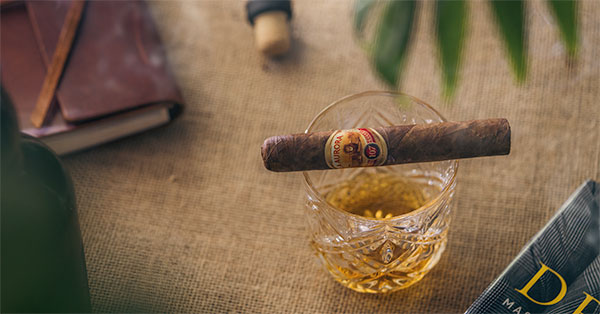
Demystifying a time-honored tradition.
Thanks to La Aurora for partnering with us to make this article possible.
There’s something special about cigars.
Maybe it’s the mystery of watching someone disappear into a dimly-lit humidor. Maybe it’s their association with celebration – from congratulating a new father or marriage to punctuating the end of some business deal or daring heist. From Wolverine to WWII fighter pilots, from corporate raiders to camo-wearing revolutionaries, cigars have made a mark in a way few vices have.
For all that seductive sophistication (and partly because of it), cigars can be intimidating. The same complexity that makes cigars stand out also makes them turn folks off from ever trying them. Factoring in the potential price and effort involved, plenty of people will steer clear of cigars in favor of more familiar vices.
Don’t be one of them.
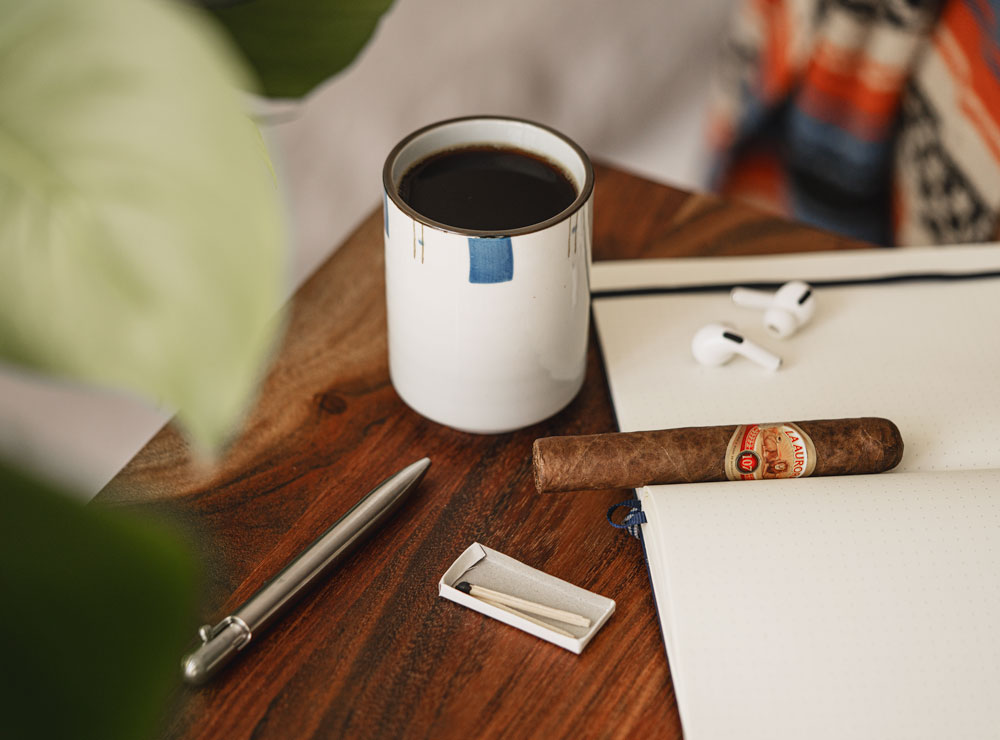
Whether you’re an aspiring aficionado, just looking to mark a special occasion, or even just curious, the truth of the matter is that cigars, and the traditions that include them, can be enjoyed by everyone. For the modern man looking to enjoy an age-old ritual, here’s everything you need to know about smoking cigars the smart way and have a good time doing it!
What Makes A Cigar A Cigar?
You’d think there’d be an easy answer to that question. Even in our health-conscious society, cigars have had such an impact on pop culture that most of us have seen some cartoon stogie before we’d turned five. Even those of us who’ve never smoked can probably explain that a cigar is aged tobacco (usually from Central America or the Caribbean) that’s been dried out, chopped up, and wrapped in more aged, dried tobacco leaves. While that’s what a cigar is made of, don’t make the mistake of thinking that’s all a cigar is. Much like scotch, simple ingredients don’t make for a simple end product.
Every cigar is a story. The type of tobacco used, how long it’s aged, the skill of the person creating it, and even the soil it’s grown in plays a pivotal role in differentiating one cigar from another. While that endless variety can take a lifetime to work through, the good news is that there are general rules to help demystify cigars.
Types of Cigars
Cigar Color & Flavor
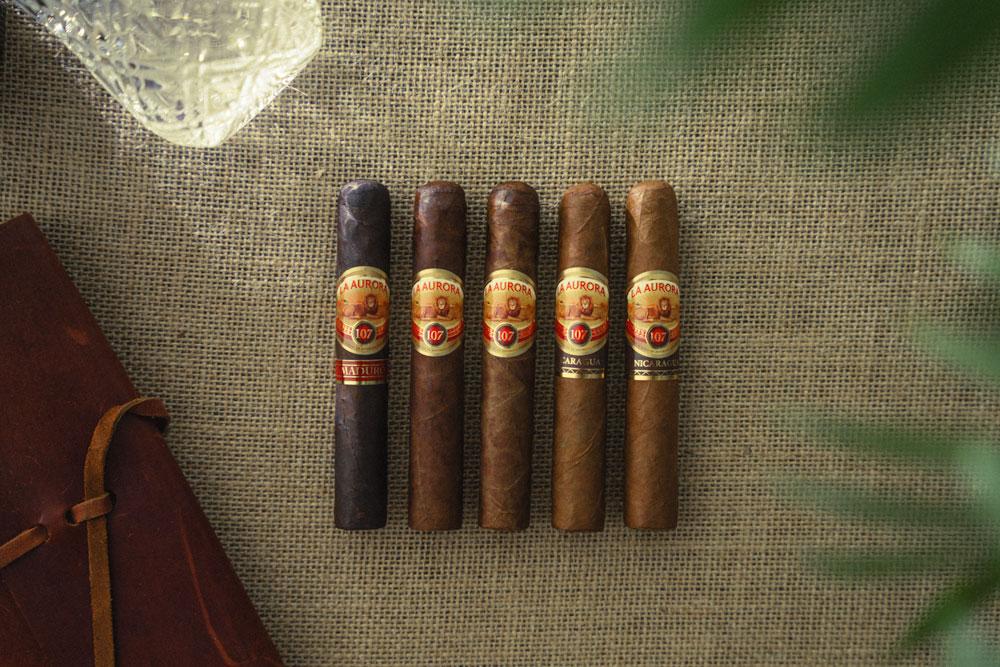
One of the single biggest hurdles people have when it comes to getting started with cigars is, well, getting started. Faced with a literal wall of choices, it’s easy to get overwhelmed. How on earth are you supposed to tell which cigars are worth the twenty-odd bucks you’re about to spend from the cigars that taste like orphan tears and despair?
While there’s exceptions to every rule, one of the best ways to start is by checking the color of the cigar. Typically, the color of the wrapper (the exterior of the cigar) will indicate how long the tobacco’s been allowed to mature, which in turn (generally) corresponds to the general flavor profile of the cigar.
The lighter the wrapper, the lighter (and more accessible) the flavors tend to be – often with floral, citrus, and cream notes. On the other hand, darker cigars tend to have heavier flavors – leather, wood, nuts, coffee, and chocolate.
Don’t make the mistake of immediately jumping to the darkest cigar you can find. Much like people insisting on the smokiest, peatiest scotch, there’s nothing impressive about ingesting something you don’t like in some flimsy attempt to look masculine. If you’re genuinely trying to experiment with cigars, best practice is to start on the lighter end (or try a variety pack).
Cigar Shape & Size
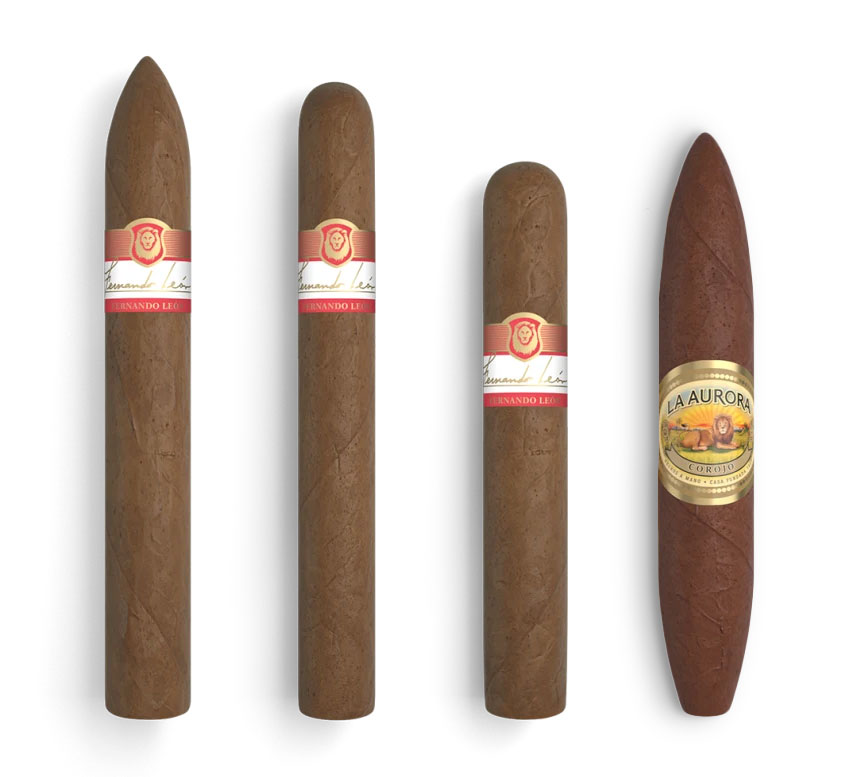
Though the majority of cigars you’re likely to encounter will be “Parejos” – straight, cylindrical, and rounded at the cap, it’s worth noting that variations in the thickness and overall shape of cigars do play a role in flavor.
“Figurados” – cigars with more torpedo, conical, or American football shapes – can add complexity to your experience. The changing thickness of your cigar affects how it burns, which can change the intensity of the flavor as you work your way through. Despite Figuarados tending to be more expensive than Parejos, one isn’t necessarily better than the other. Thicker cigars tend to burn cooler and more slowly, giving individual flavors more room to work off each other while thinner cigars tend to burn more quickly and more hotly, usually putting a single, intense flavor at the forefront.
Avoid the rookie mistake of rushing your experience. One of the most common mistakes first-time enthusiasts make is underestimating just how long it takes to work through a cigar. Even the smaller varieties can take a solid hour to enjoy – don’t make yourself sick by trying to freight-train your way through. When looking for a cigar, bigger doesn’t mean better. While cigars can be re-lit after they burn out, a good rule of thumb is to err on the side of smaller, especially for first-time smokers.
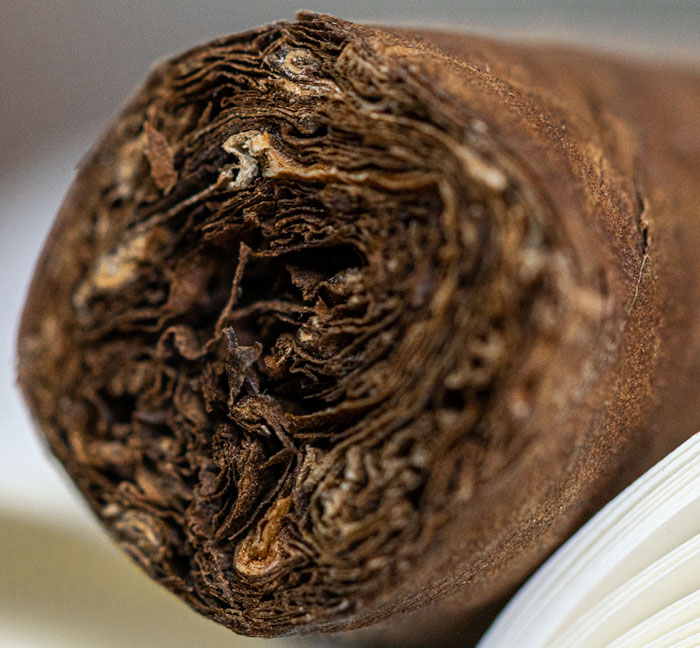
Machine Rolled Cigars vs Hand Rolled Cigars
Very similar to scotch, mass-produced doesn’t necessarily mean worse. A hand-rolled cigar is going to have more complexity and character to it – based heavily on the skill of the person creating it. They will also tend to be significantly more expensive. A mass-produced cigar won’t always have the same level of craftsmanship behind it but it will offer consistency. A good machine-rolled cigar that you enjoyed in 2012 will taste the same in 2022. A hand-rolled cigar will be far more subject to all the factors that go into creating it. It might make more sense to splurge on a hand-rolled cigar for special occasions, but for the more casual smoker, an affordable, mass-produced option is going to be the smarter buy.
Storing & Selecting Cigars
A good cigar is a moist cigar, and tobacconists will keep their cigars in a humidor to keep them from drying out. A mid or even low-range cigar that’s been stored properly will still taste better than a high-quality cigar that’s been improperly handled. When considering a cigar, give it a light squeeze. A good cigar will have a slightly spongy quality to it. A dry cigar will typically be hard (or worse, flakey) without any give at all. There are, of course, other aspects to quality, but you often won’t be able to tell those until you start to smoke it. Which brings us to…
→ What is a humidor and what does it do? A humidor is a box that helps maintain the relative humidity of the cigars so that they stay fresh and don’t dry out.
Some cigars, like the La Aurora sampler shown in our photos comes in a resealable humidifying bag that serves a similar purpose.
The Dos And Don’ts Of Cigar Appreciation
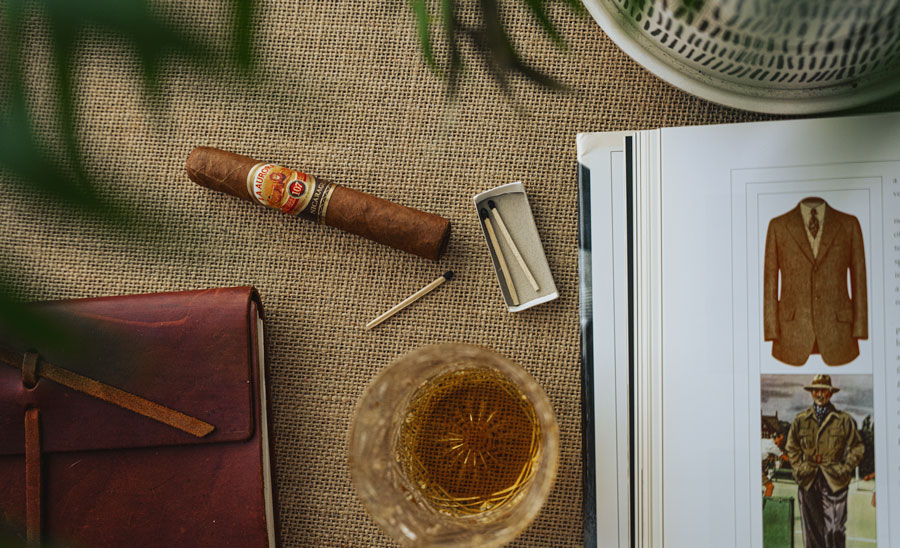
Like anything that’s been enjoyed by humans for centuries, there’s no shortage of tradition and etiquette surrounding cigars, and the only thing more challenging than figuring out which cigar to buy is learning how to actually enjoy them. While every experience is going to be different, there are some universal dos and don’ts that every aspiring aficionado should abide by.
Do Be Careful When Cutting Your Cigar
The cap (the closed end of your cigar you’ll be smoking from) needs to be removed before you light your cigar, allowing air and smoke to move through as you draw. While there’s various ways to remove the cap (each with fans who swear it’s the best and only way) our recommendation is the punch method – making a small piercing directly into the center of the cap.
While snipping your cigar with a cutter is a common method, it’s also easy to get wrong. If your cutter isn’t sharp, you risk ruining your cigar. If you cut too high up far, you risk your cigar unraveling. If you do everything right, there’s still a chance you’ll wind up with some flakes of tobacco stuck in your teeth and gums. The punch method, by contrast, helps preserve the structural integrity of even a lower-quality cigar and can be done without any special equipment (though punch-cutter tools do exist).
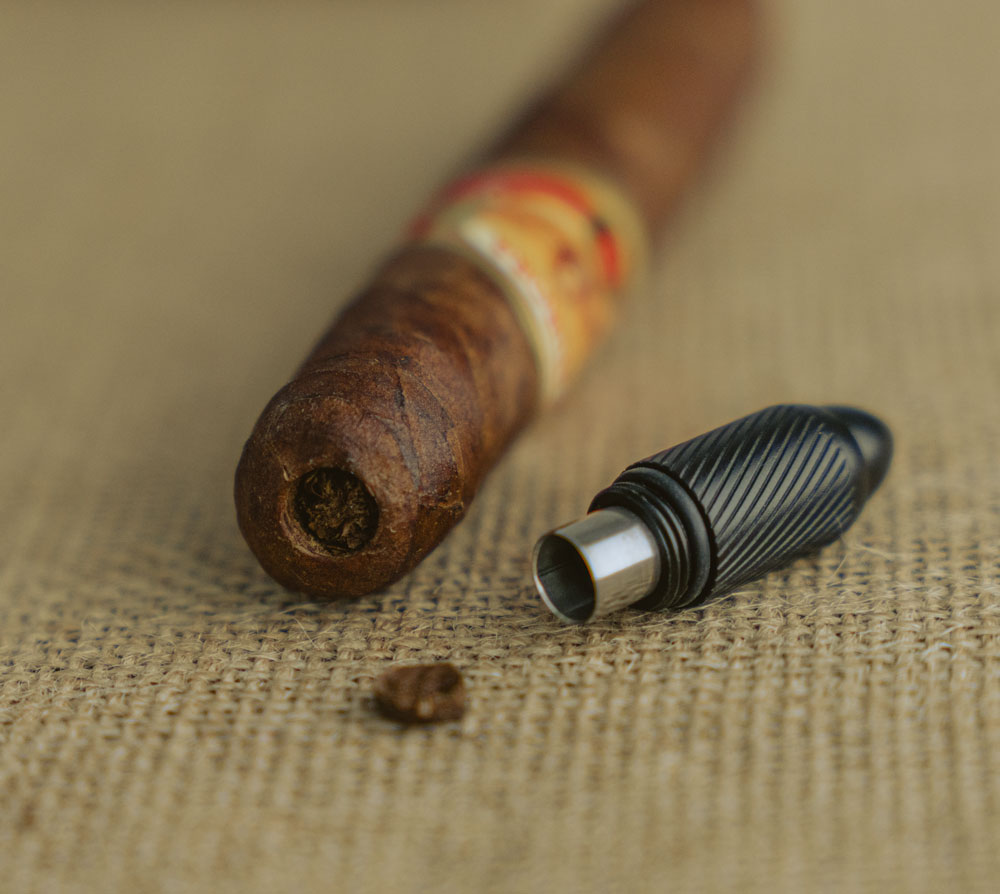
Don’t Inhale (Do Savor)
Almost every article on cigars is going to include this reminder, and for damn good reason. Unlike other tobacco products, cigars are not meant to be inhaled. Not only can that heavy amount of nicotine make you ill (more on that in a moment), but it completely defeats the point of smoking a cigar to begin with (think of chugging a bottle of expensive wine instead of slowly sipping it from a glass). Make sure to savor the cigar, drawing the smoke into your mouth, holding it for a moment, releasing it, and then giving yourself a moment before starting again.
Do Have A Solid Meal Before
Even for an occasional smoker, the amount of nicotine a cigar will introduce into your body can make you nauseous, and almost every regular cigar smoker has a story from early in their journey about getting sick to the point of vomiting. The solution? Have a solid meal ahead of time.
Science hasn’t reached an answer on exactly why having food in your stomach helps, but the near-universal consensus among cigar enthusiasts is that it does, in fact, help you avoid feeling lightheaded or ill. Having a decent drink on hand can also help you pace yourself as you puff away, giving you a reason (and an all-important reminder) to give yourself a break as you smoke.
Do Use Matches
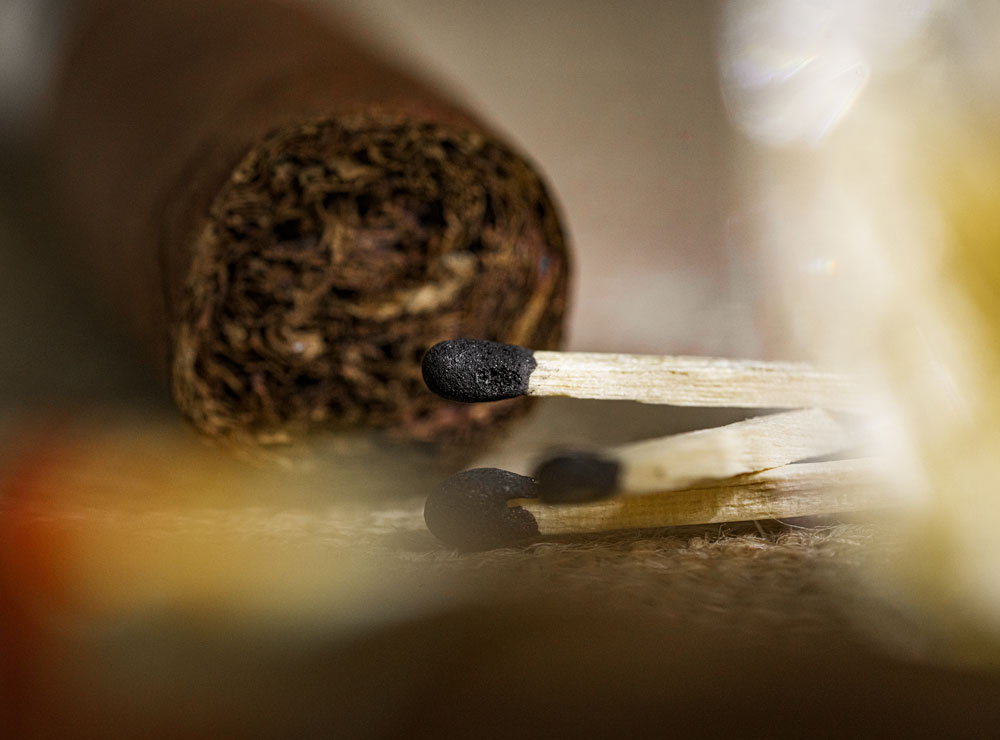
Make no mistake – the fastest way to mark yourself as a novice is to spend good money on a cigar only to ruin the taste with a cigarette lighter. While it’s an easy error to forgive (after all, why wouldn’t you light a tobacco product with a device designed to do just that?), the fuel in your standard lighter will create a harsh, unpleasant chemical taste that can damage even the best cigar.
Cigar torches do exist for fairly affordable prices, but for the very occasional smoker, or for someone only looking to smoke for a special occasion, matches just make more sense. You can get matches made specially for cigars for a very reasonable price but even standard matches will still be a step up from a cigar lit by a lighter. As a general rule, the more odorless the source of your flame is, the better your cigar will taste.
Don’t Ash Your Cigar
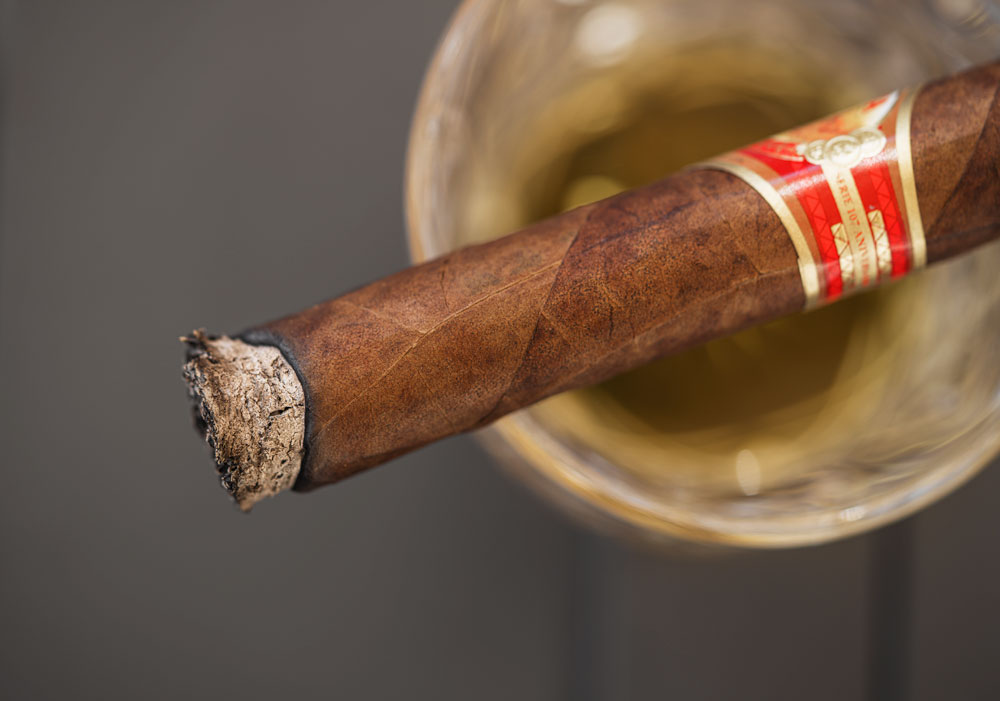
As satisfying as it can be to watch an avalanche of white-hot ash tumble off the end of your cigar, don’t intentionally knock the ash off. That build-up helps limit the air being drawn into your cigar, keeping it burning at a mild rate that improves the flavor. Overheating the ember in your cigar can give it a scorched, harsh taste. As you smoke, rotate your cigar gently to keep the ember burning evenly and your ash to cling onto place.
Don’t Hold Your Cigar Like A Cigarette
While there’s not as much judgment about the “proper” way to hold a cigar as there would’ve been a century ago, there are still good practical reasons for keeping a firm grip on your cigar. Accidentally dropping (extremely) hot ash on your clothes (or worse, your skin) can ruin even the most relaxing cigar experience. The same goes for spending good money on a great cigar, only to drop it from holding it too loosely. Any gentle-but-secure hold will work, but one of the most trusted methods is to hold the cigar between your thumb and fingers, allowing you to control and rotate the cigar without having to squeeze it.
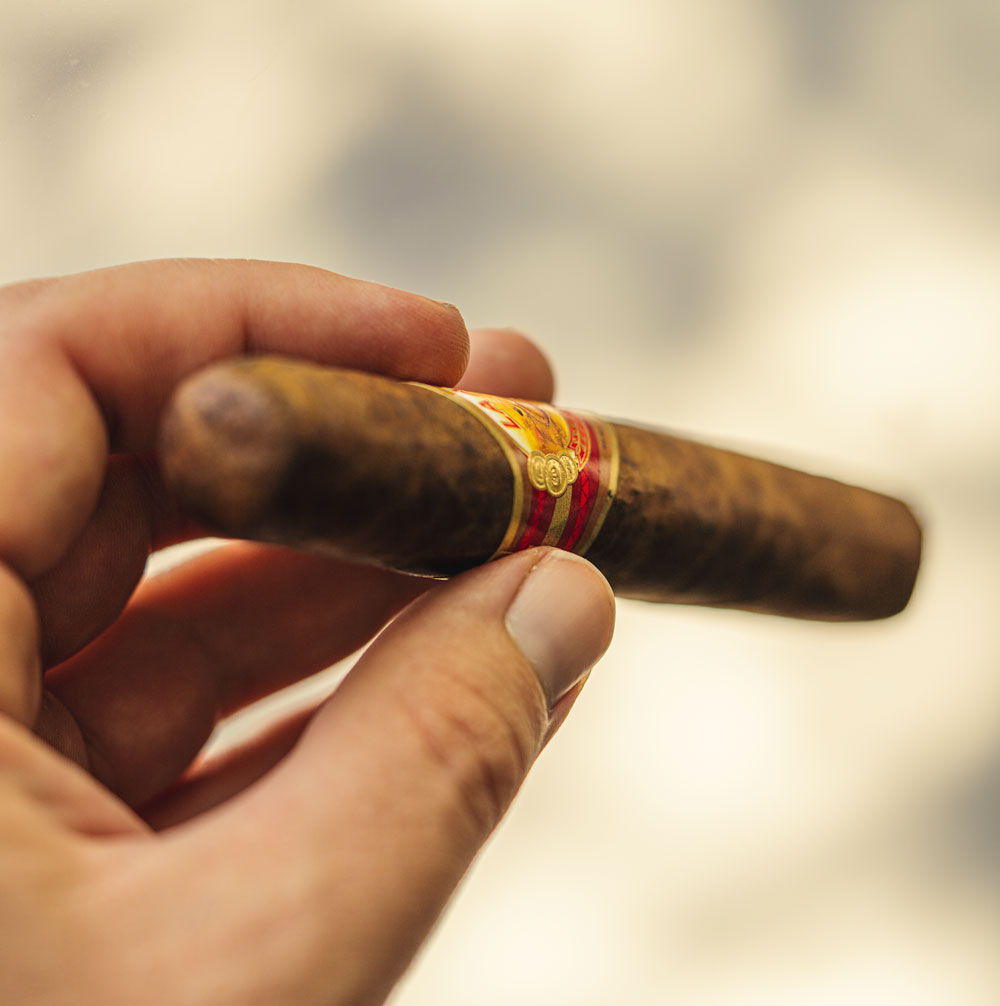
Don’t Stress Over The Band
Just as with the way you hold your cigar, whether or not you should remove the band around it is (mostly) a question of etiquette that folks have largely stopped caring to answer. Some sources argue that leaving the band on is a sign of appreciation for the company that made it. Others argue that removing the band was once a way to avoid bragging about whose cigar was most expensive. The choice is yours but one rule to follow is not removing the band until after you’ve started smoking, as the heat from your cigar will melt the gum holding the band in place, making it easier to remove without damaging the cigar.
Getting The Ritual Right
Any enthusiast will tell you that sometimes a cigar is not just a cigar. Do it right, and it’s a ceremony – a tradition that’s been built upon for generations, stretching all the way back to the ancient Mayans who used cigars not as a vice but as part of their sacred rites. But for all the rules around cigars – either common-sense or cosmetic – the only thing that ever really matters is this: are you having fun with it?
Rituals only matter when there’s meaning behind them and life’s far too short not to live it on your own terms. Whether it’s winning a game, spending an evening with old friends, or commemorating the end of a project, the single best rule for appreciating a cigar is to make it truly your own.
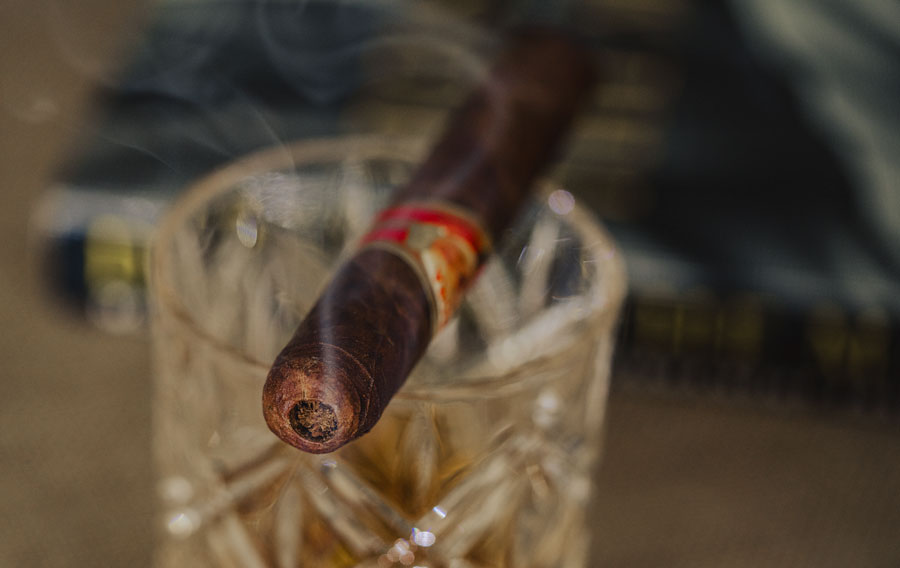
A good cigar is one that relaxes you after a challenge, or gives you some much-needed time to quietly reflect. A good cigar is one that you can enjoy around the campfire with friends or on the porch with your dad. It’s one that you like the taste of and one that you can buy without feeling guilty about the price. It might sound like heresy to the snobs, but if you break every single rule on this list and still somehow manage to like the end result, then you haven’t desecrated what a cigar is meant to do, you’ve made it exactly what it’s meant to be: enjoyable.
There is something special about cigars – it’s the experience we build around them.